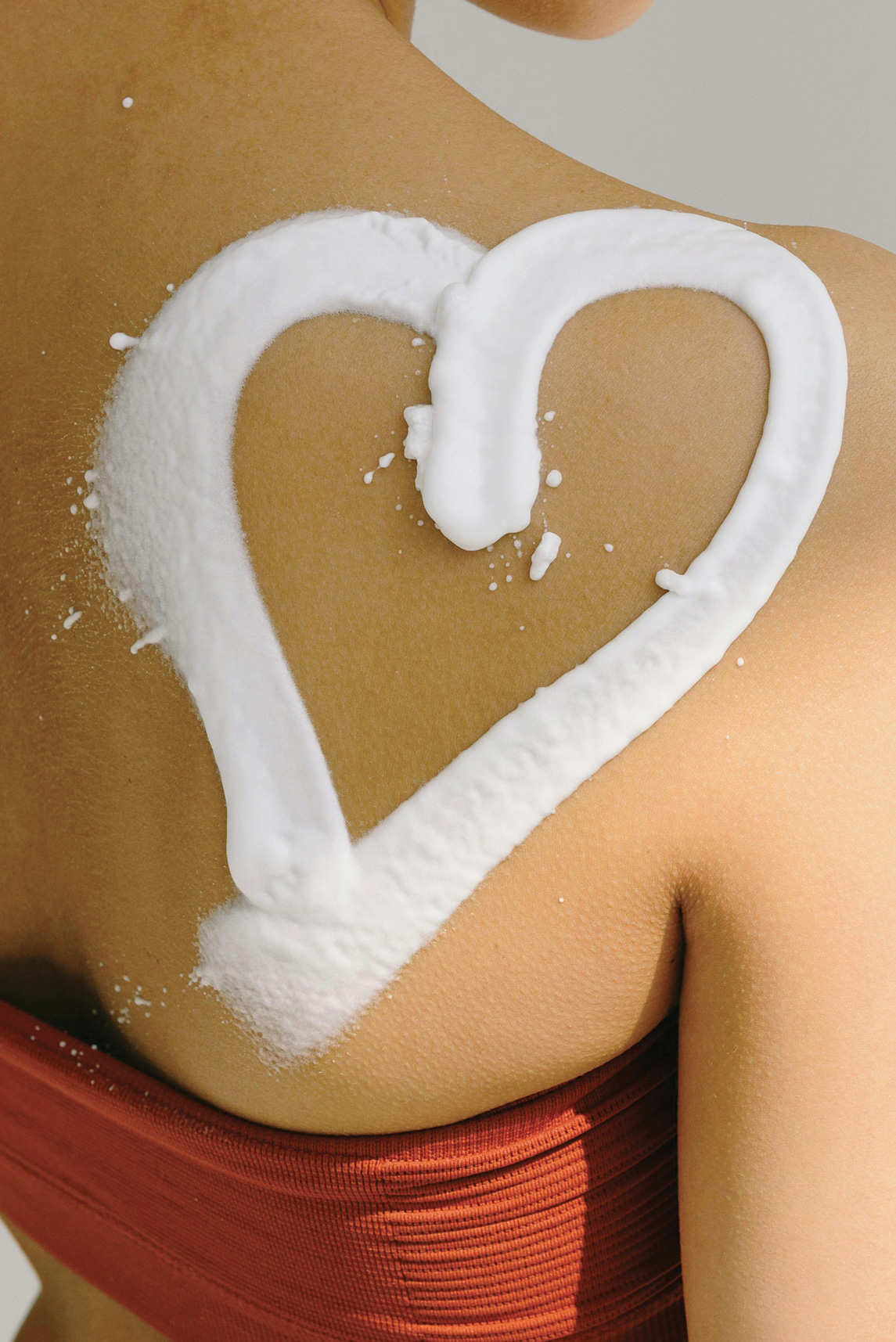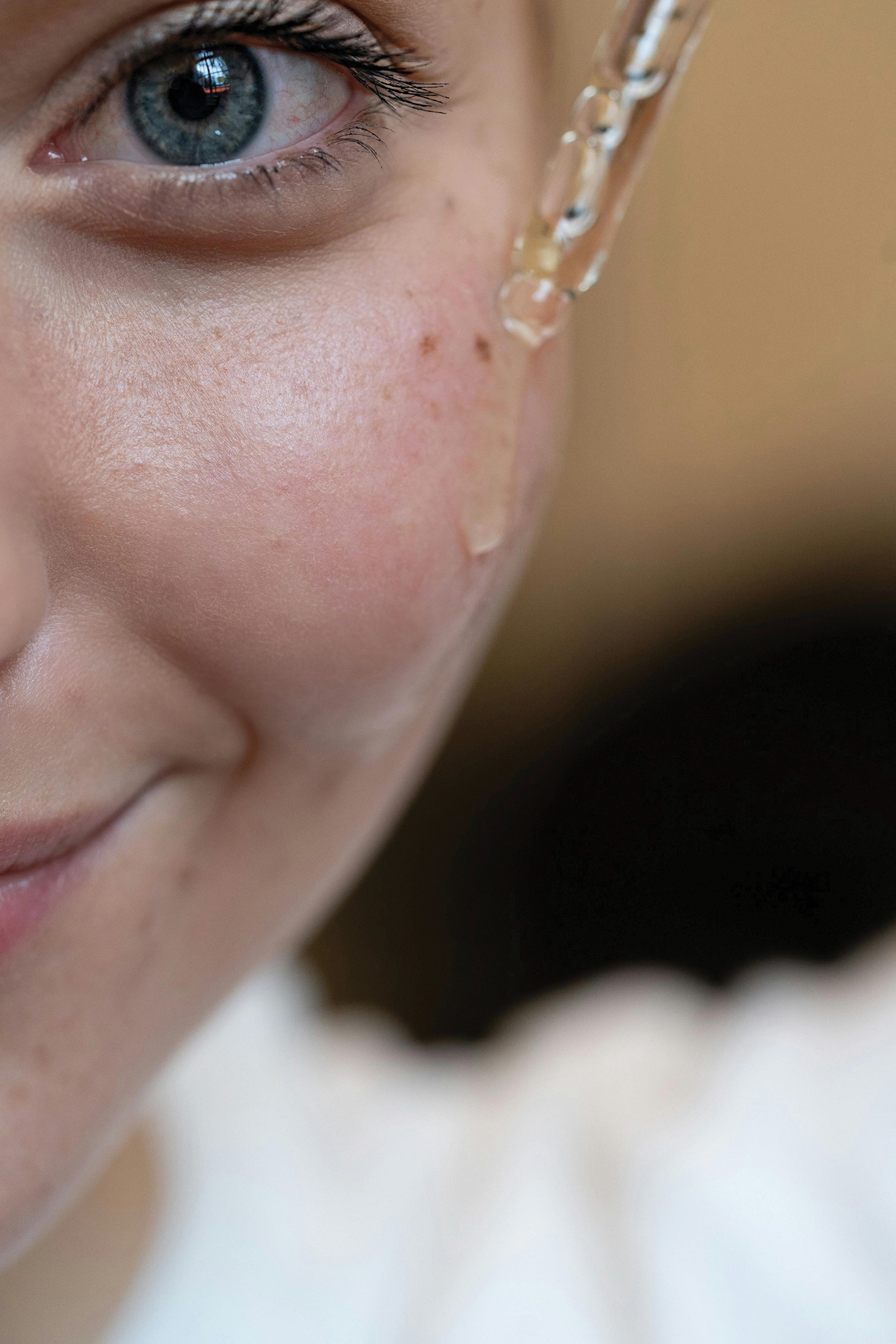Column: CONSUMER PERSPECTIVE
Future You vs. Present You
The Psychology of Prevention vs. Repair
KEYWORDS —
Prevention;
Repair;
Consumer Psychology;
Loss Aversion;
Attitude-Behavior Gap;
Perceived Efficacy
Abstract
Studies of major depressive disorder have been correlated with reduced Lactobacillus and Bifidobacteria and symptom severity has been correlated to changes in Firmicutes, Actinobacteria, and Bacteriodes. Gut microbiota that contain more butyrate producers have been correlated with improved quality of life (1).
A study in healthy women providing probiotic yogurt for four weeks showed an improvement in emotional responses as measured by brain scans (2). A subsequent study by Mohammadi et al. (3) investigated the impacts of probiotic yogurt and probiotic capsules over 6 weeks and found a significant improvement in depression-anxiety-stress scores in subjects taking the specific strains of probiotics contained in the yogurt or capsules. Other studies with probiotics have indicated improvements in depression scores, anxiety, postpartum depression and mood rating in an elderly population (4-7).
Other studies have indicated a benefit of probiotic supplementation in alleviating symptoms of stress. In particular, researchers have looked at stress in students as they prepared for exams, while also evaluating other health indicators such as flu and cold symptoms (1). In healthy people, there is an indication that probiotic supplementation may help to maintain memory function under conditions of acute stress.
“
“A study in healthy women providing probiotic yogurt for four weeks showed an improvement in emotional responses as measured by brain scans”
The other day I found myself in a rush after making shrimp and grits for a potluck. I looked at the pot, coated with bits of left-over thick, sticky grits, and thought: “That’s a problem for future Michelle.” Now, I knew better, anyone who’s made grits knows you should rinse the pan right away, before they harden and stick. But after slaving over the stove and dashing out the door to make the party on time, I told myself the pot could fend for itself until tomorrow, for Future Michelle.
By morning, the once-soft grits had set into a hardened crust, more plaster than food, clinging stubbornly to the bottom of the pot. Future Michelle was not impressed with Past Michelle’s decision-making skills. What could have been a quick rinse turned into a full-on scrubbing session; more work for me, and a bigger job for the cleaning products, which now had to be tough enough to break through the hardened mess. It was a perfect reminder that putting off prevention doesn’t just make life harder for “future me,” it also shifts demand toward stronger, more heavy-duty solutions.
It’s not just in the kitchen. We all know daily sunscreen prevents sun damage, yet wrinkle repair creams outsell it in many categories. We know fabric protectants can keep clothes looking newer longer, but stain removers are the laundry aisle staples. Prevention sounds rational, but repair often feels more urgent, more rewarding, and frankly, more human.
There’s a psychological story behind this mismatch. We know prevention is the smarter choice, yet we keep reaching for repair. Why? The answer lies in how our minds weigh effort now versus benefits later, and why fixing something that’s already gone wrong feels more satisfying than keeping it from happening in the first place. It’s not that consumers don’t value prevention. We do. But when it comes to real-world behavior, repair often wins. Our brains are wired to favor what feels good now, even if it makes things harder later. That quirk in our psychology shows up everywhere, from the bathroom cabinet to the laundry room.
Which brings us to an interesting tension in consumer products: why do we buy into the promise of prevention in theory, yet load our baskets with repair in practice?
The Prevention Ideal
There’s a quiet promise in prevention: a little effort now will buy peace of mind later. Preventative products appeal to our better selves, the idealized version of us that plans ahead, shields against damage, and invests in a future where problems never quite arrive. Prevention feels smart, responsible, and even a little virtuous.
In personal care, the most familiar example is sunscreen. We know daily SPF is the cornerstone of healthy skin, protecting against wrinkles, pigmentation, and sunburn long before they appear. More recently, barrier creams and serums have taken on that mantle as well, marketed as shields against pollution, environmental stress, or the invisible wear of modern life. The promise is rarely dramatic; instead, it’s quiet protection, with benefits you may only notice years down the line. The same logic extends into the home. Laundry products like anti-fade additives, fabric protectants, or water-repellent sprays all ask us to do a little extra today to make clothes last longer. A coat of Scotchgard on upholstery doesn’t dazzle you in the moment, but months later, when a glass of wine beads and wipes away instead of sinking in, you appreciate the foresight. On paper, prevention should be the easier sell. It’s cheaper in the long run, avoids the hassle of deep fixes later, and fits beautifully into the language of sustainability: preserve rather than discard, maintain rather than repair. And in surveys, consumers consistently say they like the idea of prevention. Words like “healthy,” “smart,” and “responsible” reliably score well in concept testing. It’s not just wishful thinking. The survey world is rife with biases that push us to speak as our ideal selves, not our fallible ones.

This is the classic gap between what people say they will do (or what values they endorse) and what they actually do, called an attitude-behavior gap. In consumer and sustainability research, many studies document that people express strong pro-health, pro-environment, or preventive attitudes in surveys, yet their purchasing behavior does not always follow. Wintschnig et al. (2021) highlight how consumers often express strong support for sustainable, preventive behaviors in surveys, but practical barriers and competing motivations lead to a gap between what they say and what they actually do. While consumers claim to love prevention, their baskets often tell another story.
Because prevention is often framed in values (health, foresight, responsibility), it is especially vulnerable to this gap: people say they want to “do the right thing,” but in practice opt for more immediate or easier repair solutions. Social desirability bias may also drive this behavior, the desire to appear socially acceptable or “good.” This is especially true for behaviors tied to health, environmentalism, or responsibility. King and Bruner (2000) argued that social desirability bias has been underexamined in consumer research. Their work shows how self-report measures can overstate “ideal” behaviors, like for prevention products, where surveys may capture consumers’ desire to appear responsible (“of course I use sunscreen every day”) rather than their actual habits, which lean more toward repair solutions.
All of this means that while consumers often say they prefer prevention (and associate it with “healthy,” “smart,” “responsible”), actual behavior often bends toward repair or remediation when push comes to shove. Because the benefits of prevention are delayed and largely invisible, they can feel less rewarding in the moment. You don’t see wrinkles being prevented when you apply sunscreen, and you don’t watch your favorite black t-shirt stay dark day by day. Prevention asks for trust, while repair offers proof.
The Repair Reality
That gap between what we say and what we do becomes even more clear when you look at consumer perceptions of repair products. Unlike prevention, which asks for faith in invisible benefits, repair is triggered by something we can’t ignore. It’s the stain that ruins your shirt, the wrinkle that suddenly seems deeper, or the grout that looks dingy. It’s also the pot of grits I left overnight. Prevention would have been rinsing it right away. But staring at the hardened mess the next morning, repair was my only option. And just like I had to reach for a tougher scrubber and hope my detergent was strong enough, consumers in these moments turn to products that promise visible, tangible results. That’s where repair shines. You can see the immediate benefit, the stain fades or the skin texture smooths. That immediate feedback makes repair not only practical, but emotionally satisfying. It feels like taking control, solving a problem, and restoring something you value.
In personal care, repair products dominate where visible flaws demand attention. Products like Kiehl’s Retinol Skin‑Renewing Daily Micro‑Dose Serum is a classic repair player, it promises to smooth fine lines or restore firmness that’s already been lost. Kiehl’s states their product is a “potent retinol serum in a daily-strength micro-dose that visibly reduces wrinkles, firms skin, evens skin tone, and smoothes texture with minimal discomfort.” Their marketing doesn’t whisper about “future damage prevented”; it says the results are visible. Ads for products like these often show side-by-side “before and after” photos, making the transformation feel concrete and urgent, and importantly, effective. The language and visuals are telling. Terms like rescue, repair, restore, revive, correct are more than embellishments, they frame the product as a solution to a loss. And unlike prevention, which often leaves consumers guessing whether it’s doing anything, repair gives immediate, or at least visible,emotionally compelling feedback. Even a small result feels like a victory.

In bathrooms and kitchens, grout whiteners and surface “revivers” step onto the stage with dramatic visual contrast. For example, Zep Grout Cleaner & Brightener is often highlighted for restoring dingy grout lines to crisp whiteness. Likewise, grout-whitener pens (thin applicators with a fast-dry formula) make the transformation immediately apparent.In tile and surface care categories, the “before vs. after” contrast is literally built into the claims and even the names. These repairs offer real-time feedback: you spray, scrub, or dab, and you see something happen. That visible shift, even if small, triggers a powerful emotional payoff. Especially in contrast to prevention, where you have to trust in invisible benefits and maybe even wait long periods of time, repair gives immediate confirmation that something was wrong and that you took corrective action. That satisfaction is a large part of what makes repair products so compelling in consumer behavior.
Repair doesn’t just fix things; it offers a compelling emotional experience. At its core, repair represents a clear feedback loop: you perceive a visible problem, you take action, and you see an improvement. That loop itself is psychologically reinforcing: the sequence “problem → effort → visible result” delivers a moment of satisfaction that prevention usually can’t match. There is a feeling of relief or regained control that can feel more than cosmetic. Repair feels like reclaiming something lost. In that way, it carries echoes of a behavioral economics principle of loss aversion, where losses loom larger than equivalent gains (meaning people feel more pain from losing something than pleasure from gaining something of equal magnitude). The concept of loss aversion is a staple in Tversky and Kahneman’s Prospect Theory, and is also found in research in cognitive psychology, decision theory, and behavioral economics. Loss aversion is a robust concept: we’re generally more motivated to avoid or undo losses than to pursue equivalent gains, one reason repair products, which promise to ‘get back’ what’s been lost, feel so compelling. Even within the same product consumer skincare studies on message framing echo this concept: emphasizing the gains of protection (e.g., ‘keep skin healthy and even-toned’) will outperform loss frames for prevention behaviors like sunscreen. When consumers choose repair over prevention, it’s not necessarily laziness, but rather it may be that the emotional payoff is simply clearer, sharper, and more immediate.
Your Closing Takeaway: Now vs Later?
Consumers may aspire to prevention. They like to think of themselves as careful, responsible, and future-minded people. But in practice, behavior tends to skew toward repair. When damage is visible, immediate action feels satisfying, and the psychological reward is hard to resist.
For brands, the opportunity here lies in recognizing and working with this tension rather than trying to fight it. Lean into it. Prevention products can be made more appealing by bringing the benefits into the present:
- Highlight short-term wins. Consumers need to feel prevention working right away. For example, a sunscreen that not only protects against UV damage but also delivers instant hydration and a healthy glow creates a visible, immediate benefit. Similarly, a fabric protector that makes clothes feel softer after the first wash reinforces that the product is “doing something now,” not just saving them from stains later.
- Build in sensory cues that signal effectiveness. Sensory design can make prevention tangible. A protective spray might leave behind a light, clean scent that reassures users the barrier is in place. A serum marketed for long-term skin barrier support could have a cooling texture that signals calm and comfort in the moment. Even subtle sound cues like the fizz of OxiClean when mixed with water give consumers the satisfaction of perceiving efficacy directly.
- Gamify the habit to make it rewarding day to day. Turning prevention into a small win can drive consistency. Apps and devices already do this with streaks and progress tracking, but even packaging can play a role, like a sunscreen bottle that “counts down” uses, or laundry pods packaged in a way that makes the routine feel like a set of daily achievements. By framing prevention as a series of micro-rewards, the long-term habit feels more engaging and less like a chore.
Repair products, meanwhile, don’t need to be cast as signs of failure. They can be positioned as tools of resilience and empowerment that help consumers recover, restore, and feel in control again. Messages that frame repair as part of a holistic self-care or home-care journey can avoid shame and instead emphasize strength.
Ultimately, the prevention–repair paradox isn’t a battle to be won on one side or the other. It’s a dynamic of balance between future aspirations and present realities, shaping how consumers relate to the products they bring into their homes and put on their skin. For innovators, leaning into both sides of this dance opens more space for relevance, resonance, and trust.

Studies of major depressive disorder have been correlated with reduced Lactobacillus and Bifidobacteria and symptom severity has been correlated to changes in Firmicutes, Actinobacteria, and Bacteriodes. Gut microbiota that contain more butyrate producers have been correlated with improved quality of life (1).
A study in healthy women providing probiotic yogurt for four weeks showed an improvement in emotional responses as measured by brain scans (2). A subsequent study by Mohammadi et al. (3) investigated the impacts of probiotic yogurt and probiotic capsules over 6 weeks and found a significant improvement in depression-anxiety-stress scores in subjects taking the specific strains of probiotics contained in the yogurt or capsules. Other studies with probiotics have indicated improvements in depression scores, anxiety, postpartum depression and mood rating in an elderly population (4-7).
Other studies have indicated a benefit of probiotic supplementation in alleviating symptoms of stress. In particular, researchers have looked at stress in students as they prepared for exams, while also evaluating other health indicators such as flu and cold symptoms (1). In healthy people, there is an indication that probiotic supplementation may help to maintain memory function under conditions of acute stress.
References and notes
- Bleichrodt, H., & L’haridon, O. (2023). Prospect theory’s loss aversion is robust to stake size. Judgment and Decision Making, 18, e14.
- Detweiler JB, Bedell BT, Salovey P, Pronin E, Rothman AJ. Message framing and sunscreen use: gain-framed messages motivate beach-goers. Health Psychol. 1999 Mar;18(2):189-96. doi: 10.1037//0278-6133.18.2.189. PMID: 10194055.
- Harding, J., & Taylor, G. (2025, May 2). The 7 best fabric protectors, tested and reviewed. BobVila.https://www.bobvila.com/articles/best-fabric-protector/
- Kahneman, D., & Tversky, A. (2013). Prospect theory: An analysis of decision under risk. In Handbook of the fundamentals of financial decision making: Part I (pp. 99-127).
- King, D., Auschaitrakul, S., & You, Y. (2024). Felt something, hence it works: Merely adding a sensory signal to a product improves objective measures of product efficacy and product evaluations. Journal of the Academy of Marketing Science, 52(6), 1761-1779.
- King, M. F., & Bruner, G. C. (2000). Social desirability bias: A neglected aspect of validity testing. Psychology & Marketing, 17(2), 79-103.
- Lauren, A. (2025, March 12). Reasons your laundry always fades. Real Simple.https://www.realsimple.com/reasons-your-laundry-always-fades
- Lee, J., Oh, S. J., Park, S., Park, J. H., & Lee, J. H. (2021). Anti‐pollution skincare: research on effective ways to protect skin from particulate matter. Dermatologic Therapy, 34(4), e14960.
- Stockfleth, E., & Revol, O. (2022). Encouraging sun protection early in life: from a successful prevention programme in children to the identification of psychological barriers in adolescents. Journal of the European Academy of Dermatology and Venereology, 36, 12-21.
- Wintschnig, B. A. (2021). The attitude-behavior gap–drivers and barriers of sustainable consumption. Junior Management Science (JUMS), 6(2), 324-346.

